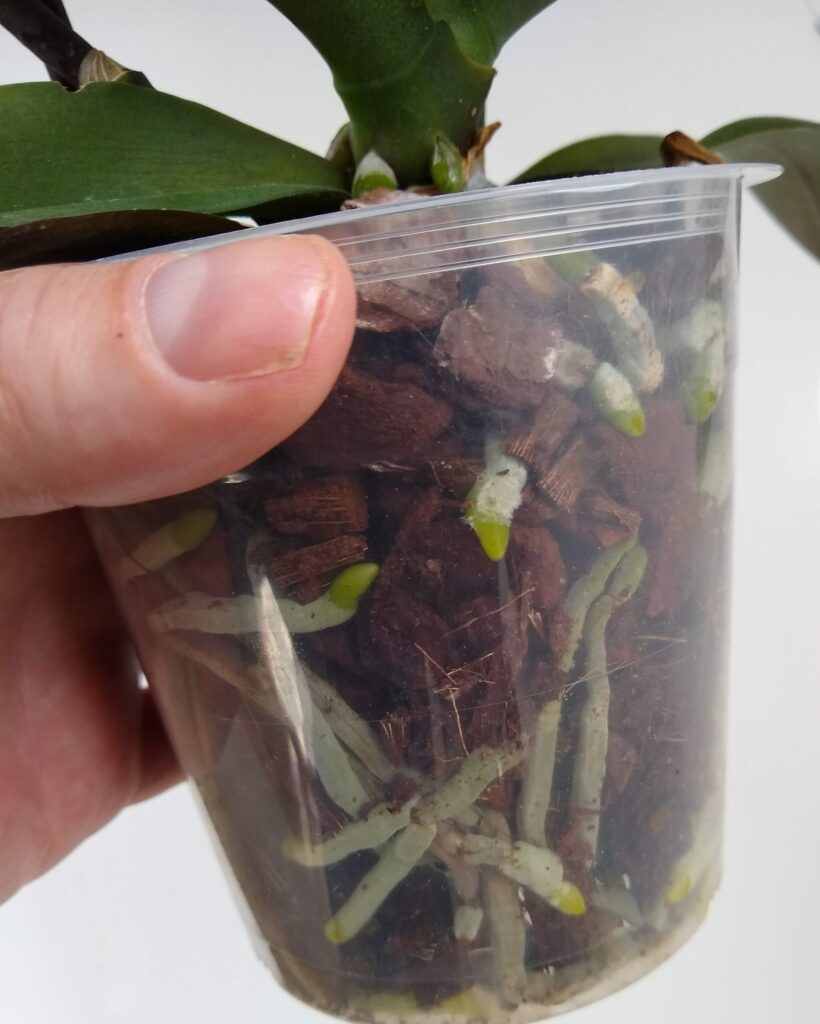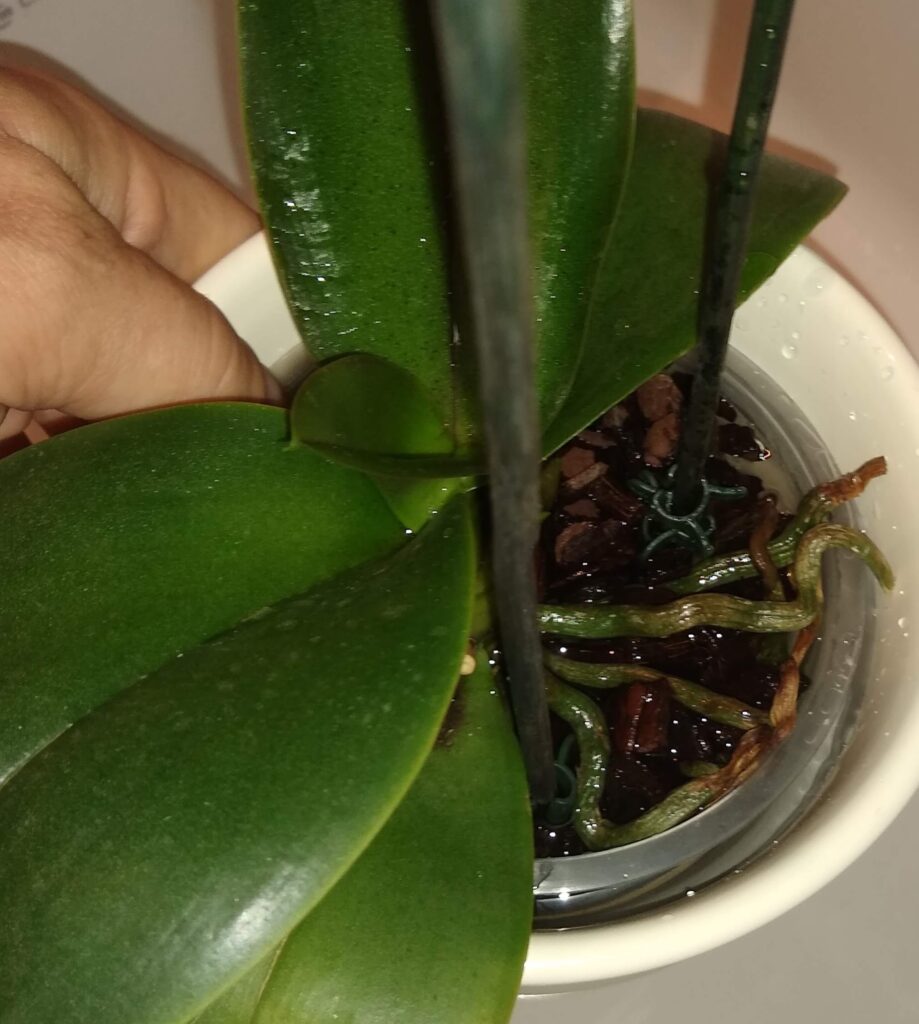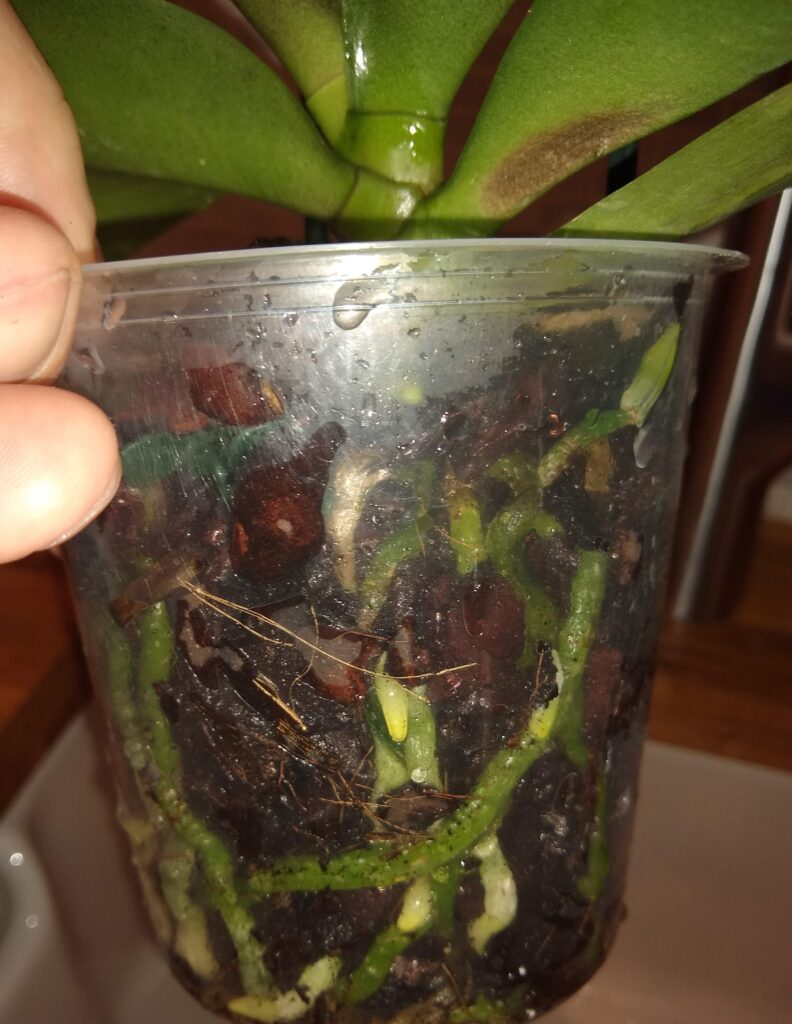
Phalaenopsis orchids, or “moth orchids” are the most common type of orchids grown in homes. It’s easy to see why – once you’re used to caring for them, they can provide years of pleasure with repeated blooming of elegant flowers that can last for months at a time.
In this blog, I’ll tell you more about them and share what I’ve learnt from my own experience about how to get the best from them.
About Phalaenopsis
A good way to get the best from plants, be they houseplants or outdoor plants, is to understand a little about how they grow in their natural environment.
Phalaenopsis are native to many areas in tropical Asia where they grow on tree branches under the top canopy. This is why they like lots of light, but not direct sunlight.
Between one downpour and the next, the atmosphere is generally humid, slowly drying out before the next rainfall. This informs how to water them. Similarly, as they grow on the branches of trees they have adapted to low levels of nutrients, hence their need to only be fed lightly.

Phalaenopsis Care – Light
- One of the keys to successful flowering is good light, but not direct sunlight in the hottest part of the day (i’d say 10-4 in Summer) which can scorch the leaves. An East or West facing window will work well, or south facing like mine as long as you take them out if the direct sunlight on sunny days! North facing is ideal as long as the light is good.
- It’s also worth gently wiping the leaves with a damp kitchen towel every few weeks, as they can collect dust. Keeping the leaves clean will help the plant get the maximum light possible for growth and flower production.
Phalaenopsis Care – Watering & Feeding
This is the most important thing to get right for success with moth orchids.
Over-watering is the biggest killer of these plants, and the easiest thing to get wrong – so read on and i’ll share what i’ve learnt.
People often use a rule of thumb of watering their moth orchid once a week. This works to a degree, in that it will probably avoid death through over-watering, but it’s not really taking the needs of the plant into account – in Summer they will probably need more watering than this, in winter this may be too much!
A better way is to learn to recognise what the plant is “telling you” it needs.
Look at the roots …
The secret is to look at the roots – that’s one of the reasons they’re best grown in clear pots.
When the roots take on a light, silvery green colour, and the growing medium (usually bark) is looking dry and the pot is feeling very light – this is the time to water!
I normally water in the morning.

How to water ….
The way I do this is to pour tepid water onto the top of the bark surface whilst still in the cover pot, until the cover pot fills to the top so the roots and bark is submerged.
I then leave this submerged for 5 minutes or so to give the bark time to properly soak.
Then I tip the water out the cover pot and allow the bark and roots in the clear pot to drain excess water away. You don’t want your orchid roots to be sitting in excess water as they would quickly rot.

Once you’ve watered …
Once watered you’ll see the roots will have changed colour from silvery green to a much deeper green colour, and the bark will be darker brown now it’s wet. The pot will also weigh more.
Your orchid will now be fine for a few days, but check it after that to see whether the roots are turning silvery again.
The best advice I can give is if you’re not sure whether your orchid needs water yet or not, then don’t water. Wait another day or so and check again. This will avoid you over-watering.

Feeding Your Moth Orchid
I generally feed my phalaeonopsis orchids every other time I water them, particularly when they’re actively growing – either leaves, or flower stalks.
The easiest way is to add an orchid feed to the water in which you submerge your orchid pot.
Orchids don’t like lots of feed – so make sure you use a specific orchid feed following the dosage instructions, or if using a houseplant feed, use it to about one third of the recommended strength.
We stock a range of orchid feeds, pots and other houseplant care accessories – have a look in our houseplant section outside the cafe on in our online shop.
How you can buy
- We stock Phalaenopsis (moth) orchids all year round in our houseplant area.
- Look out for different colours and varieties. Try a variety with smaller flowers too – i’ve found these can produce lots of blooms and are slightly daintier than their relatives with larger flowers.